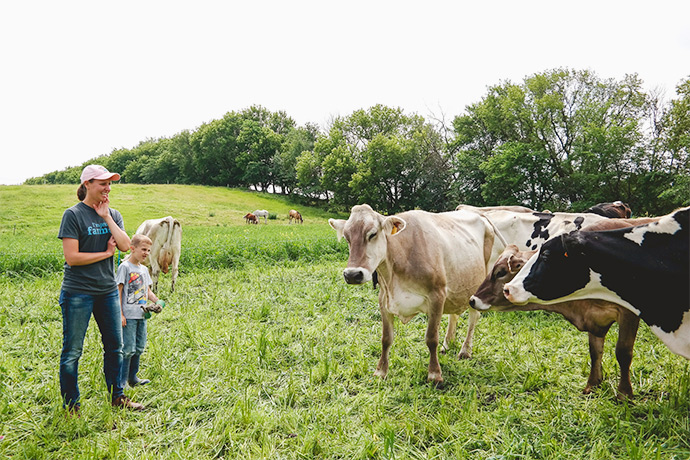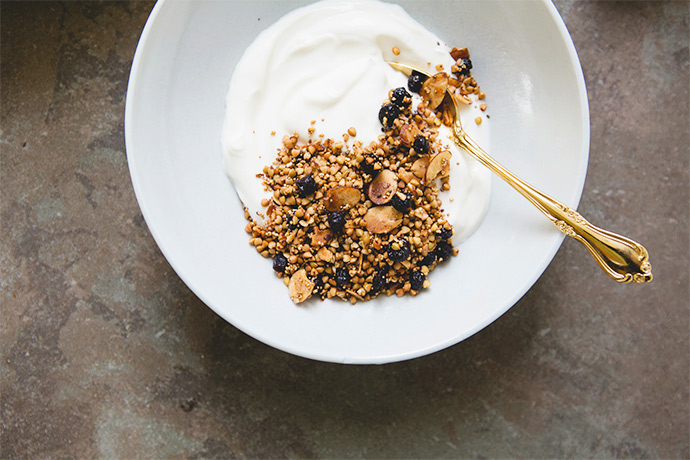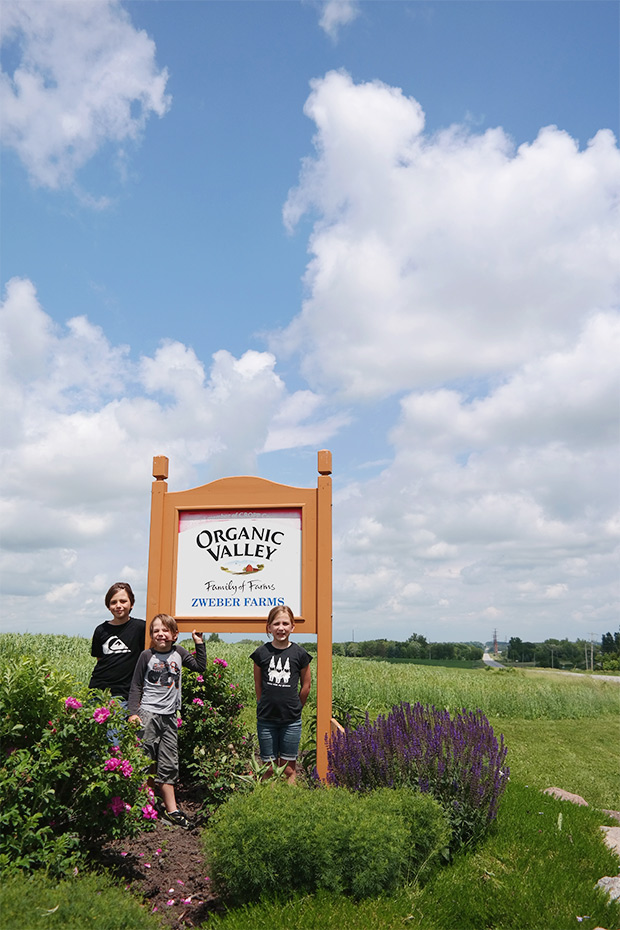We visited an organic farm last summer, and the experience has made a lasting impact. This post is part of a partnership with Milk Life and the National Milk Producers Education Program.

Last summer the kids and I piled into the car one morning and drove south through fields of farmland until we stopped at Zweber Farms. Zweber is an organic dairy and meat farm, tucked away near Elko Speedway.
My kids, hesitantly at first, walked up the drive to where Emily and her children waited to show us around their farm. In what seemed like no time at all, Kjell, Lene, and Magnus were asking questions about milking, about what the cows eat, about where they sleep, and then they were all vying for a chance to feed one of the calves. Cow pies were hopped over, toads were caught, and chickens were chased.



At the end of the day, we all walked away with a greater respect for what goes into dairy farming, and my kids had a better idea of why we choose the milk we do at the store. They learned about different types of cows, how Normande cows are prized for the quality of their milk and can be recognized by the lunette marking around their eyes (it looks like they’re wearing glasses). The little Vikings were particularly impressed that this type of cow is said to be descended from cattle brought by Viking settlers to France.

We learned what it takes to be an organic from the bedding to the grass they munch, to the impact on the surrounding community by using non-GMO feed and no synthetic fertilizers or pesticides. Organic milk is also free of growth hormones and antibiotics. Plus, the kids are thoroughly convinced we should become best friends with the Zwebers so they’ll let my kids do “summer camp” on the farm (read: live there instead of in the city with me).


At home, over our morning breakfast, the kids have carried with them a new appreciation for what they’re eating, what they pour over cereal, and where it came from. It’s the beauty of heading to a farm visit and letting them experience firsthand a bit of where their food comes from.

Many experts recommend getting 25-30g of protein before noon, and getting the recommended amount with protein from sources like organic milk or homemade Greek yogurt and buckwheat granola helps fill us up and give us energy to tackle the morning ahead, even if our day may not be mucking stalls and milking cows. We’re grateful to the farmers that spend their days doing just that so we can enjoy the product of their labor.


A big thanks to Emily and the entire Zweber clan for sharing their farm with us!







Visiting dairy farms allows you to see firsthand the daily operation of safe milk … visitors through a tour of how an organic dairy farm and feed mill operate. … Every kid should meet a cow, take a hayride, see a tractor, and smell.Farm visits are dispelling children’s deep ignorance about where the food … scheme, challenge many children’s belief that milk comes from bottles and … they chose their food, to buy more local, seasonal or organic products. SEE MORE : THESIS WRITING SERVICE
This natural dairy and arable homestead pride itself on a hands-on approach: guests are urged to sustain and prep the creatures and watch planting and milking parlor demonstrations.
Thanks for sharing. It’s really informative for me.
Cool, children need to be shown how the world around them works. It’s good that now you can take training courses without leaving your home or look at something that is not in your city or country.
I would also like to spend time with Emily and the entire Zweber clan haha. Nevertheless, I’m reading this after 6 years. It’s 22 Feb 2022 at the moment. Have a happy life ahead Shaina.